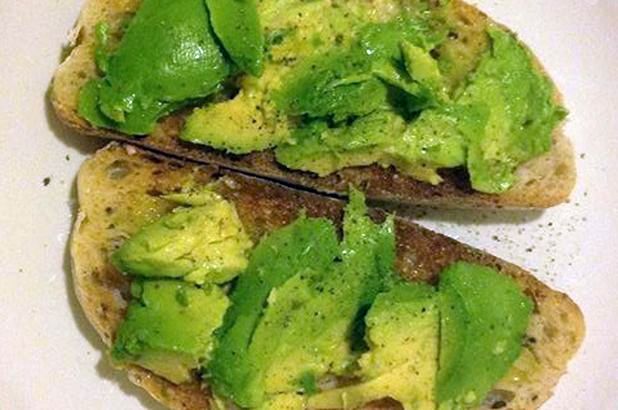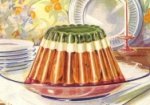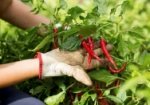With the craze for ‘avocado toast’, smashed or otherwise, being a significant a point of media interest these days, we have decided NOT to buy into the claim that, like the equally disputed pavlova and lamington, it is an Australian ‘invention’. But it has piqued our curiosity about avocados, which are native to South America, and when they found their way onto our shores.
An old acquaintance
Avocados have been known in Australia since the early 1800s, but took a very long while to find their way into our kitchens. My earliest memory of avocado is from a 1970s prawn cocktail. Sliced lengthways and splayed, fan like, in a stemmed drinking glass, it gave the effect of a ‘splash’ as the prawns, tails up, dived into the glass. Way cool!!! Salmon and avocado mousse seemed all the rage in the 1970s, layered in a fish-shaped mould. With the increasing popularity of Mexican food in the 1970s and 80s came guacamole, but I was surprised to find guacamole as a cocktail party option in Women’s Weekly magazines in the early 1960s, one recipe calling it Florida dip.

Women’s Weekly ‘avocadoes’ feature. August 8 1962 which includes a sweet avocado souffle recipe. Accessed via Trove.
A versatile fruit
Gathering recipes from across Australia, food writer and television presenter Anne Mason‘s Treasury of Australian Cooking (1962) includes nine avocado recipes for both sweet and savoury dishes. An explanatory paragraph describing their shape and colour suggests the fruit was not well known:
They grow well in Queensland, and are sent all over Australia by air, ready to be eaten in a number of ways. Because of their bland flavour they can be eaten as a salad, a sweet or in a delicious soup. (Treasury of Australian Cooking p. 99)
Avocado Fruit Salad combines chopped avocado (carefully prized from the shell) with diced oranges, pineapple and strawberries with an olive oil and pineapple juice dressing. Having marinated the fruit in the dressing, the salad is then drained and served in the shell. A savoury version is offered as a Tropical Avocado Medley, substituting the strawberries for crab meat, and served on lettuce leaves. Avocado and Pineapple Delight makes a puree of avocado with pineapple juice, then adds 2 eggs and 1 teaspoon of vanilla; half a pint of whipped cream is then folded through the puree with a little sugar, if desired. The mixture is then frozen in a tray until firm, and served on slices of chilled and well drained tinned pineapple. Another frozen dessert is Avocado Mousse, made with egg whites, sugar, whipped cream and brandy.
In contrast, The Margaret Fulton Cookbook, published in 1968, includes mashed avocado as a canape topping, and a more exotic Avocados with Jellied Turtle Soup in her Entertaining section. Avocado halves are filled with cubes of savoury jelly made by setting tinned turtle soup flavoured with sherry, with gelatine, and garnished with a ‘fluff of sour cream’. Sad to say, neither of these books have photographs.

The Avocado or Alligator Pear in Edwards botanical register 1829.
Pears and alligators
But the avocado was here in the colony long before the 1960s. Searches for ‘avocado’ in the wonderful National Library of Australia resource, TROVE, generate several newspaper articles from the 1920s and 30s, mainly from Queensland, when the fruit was being purported as a potential industry crop. It was also known at the time as an avocado ‘pear’ which is a term you occasionally hear today – logical given the shape of the fruit.
But the fruit had a previous moniker: the curiously evocative ‘Alligator pear’. This exotic plant had captured the attention of the Acclimatisation Society in the 1880s as a crop which had commercial potential:
The alligator pear is extensively cultivated in the West Indies, especially in Jamaica, and also in tropical America, to both of which places it is indigenous….
There are three varieties—red, purple, and green, the latter being the best sort. Each fruit contains one large hard seed, which is surrounded by a Urge quantity of pale-coloured butyraceous pulp, interspersed with greenish veins. This pulp has the character of a vegetable rather than a fruit, and is more highly appreciated by some than others. It is usually eaten with the addition of salt and pepper. The fruit if eaten in an unripe state is highly dangerous, producing fever and dysentery.
The Queenslander February 7, 1891.
Early interest
Even then the avocado was not a new entity in the colony – according to the Colonial Plants database avocado plant was listed as laurus perseus in Alexander Macleay’s notebook, dated 1826, (scholars dispute this date, positing 1836 and 1843). According to the catalogue record, the entry is crossed out and marked ‘dead’ which must have been a disappointment to Macleay, an avid botanist. Laurus persea is recorded in an 1828 manuscript, which lists plants cultivated in the Botanic Gardens, Sydney. It was introduced into the gardens in 1819 by the Honourable J.T. Bigge, who was sent from England to report on the colony and Macquarie’s administration. It is likely that he collected specimens from South America, then known as the ‘West Indies’.
Sources and further reading:
Australian Women’s Weekly via Trove.



